- VMware
- VMware vCenter Server (VCSA), VMware vSphere
- 06 March 2024 at 08:36 UTC
-

Although the VMware VCSA (vCenter Server Appliance) virtual machine can be managed from its console (similar to that of VMware ESXi), as well as from a web interface, activating SSH can be useful to be able to manage it remotely from the command line in case of problems.
In particular to manage services using the "service-control" program.
Note that enabling SSH for this VMware VCSA (vCenter Server Appliance) virtual machine will be required if you want to implement high availability: vCenter Server High Availability (HA).
- Enable SSH from the VMware VCSA Direct Console
- Enable SSH from the VMware VCSA web interface (VMware Appliance Management)
- Connect via SSH using Putty
1. Enable SSH from the VMware VCSA Direct Console
As with the VMware ESXi hypervisor, you can enable VMware VCSA's SSH protocol from its direct console by pressing F2.
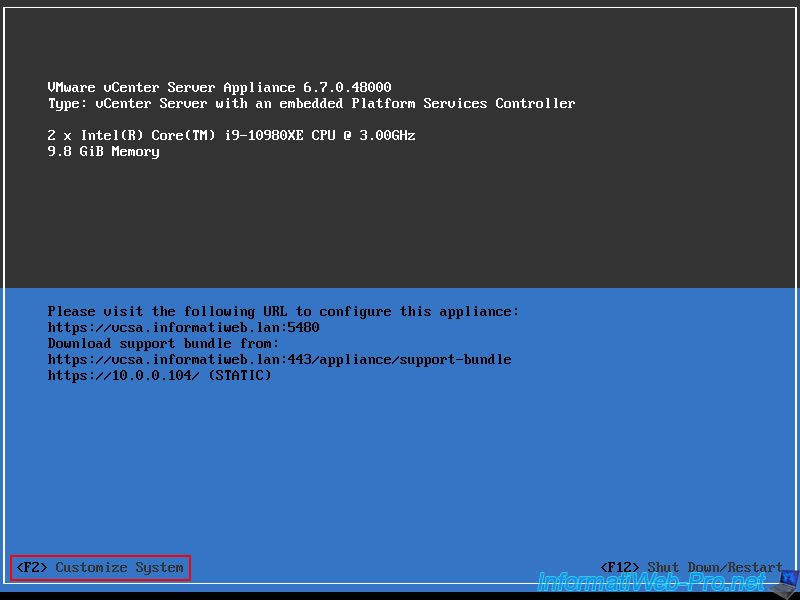
Log in as root.
Warning : unlike an installation of VMware ESXi where you could change the keyboard layout during installation, this is not the case for this VMware VCSA virtual machine.
The keyboard layout used here is therefore a QWERTY keyboard. If you used special characters for this VM's root account password, Google an image of a QWERTY keyboard to find where these are.
Otherwise, in summary, the letters "Q / A", "Z / W", "M / ?," are reversed between the AZERTY keyboard (France or Belgium) and the QWERTY keyboard.
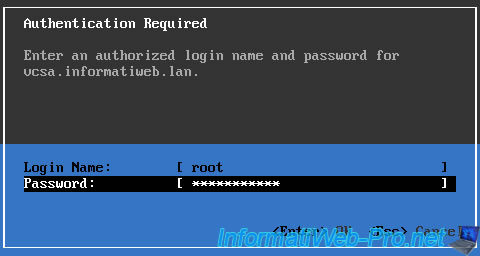
Once logged in as root, the "System Customization" screen appears.
Select "Troubleshooting Mode Options" and press Enter.
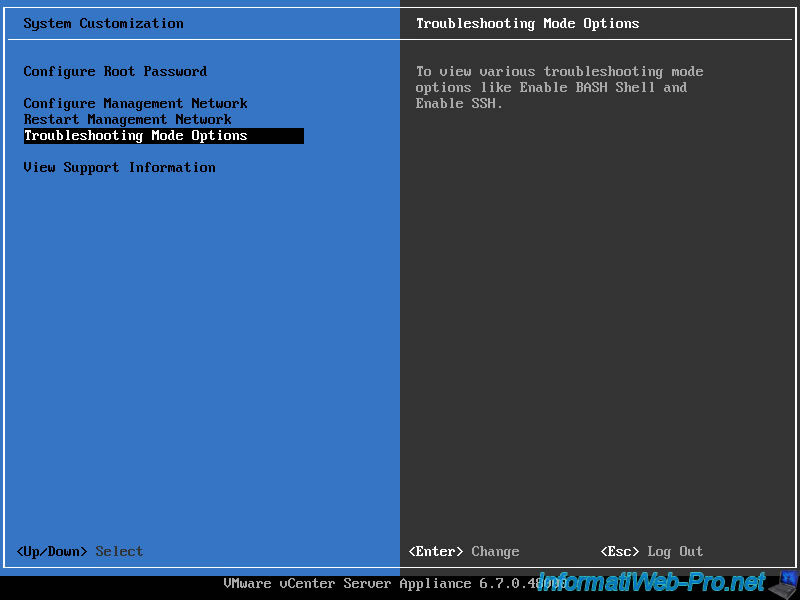
As you can see, in our case we had already enabled SSH (when deploying this "VCSA" VM).
It therefore says: SSH is Enabled.
If SSH is not enabled in your case, the 2nd option will be "Enable SSH".
In this case, select this line and press Enter to enable SSH.
Then press "Esc" 2 times to log out of this console and return to the home screen of this VM.
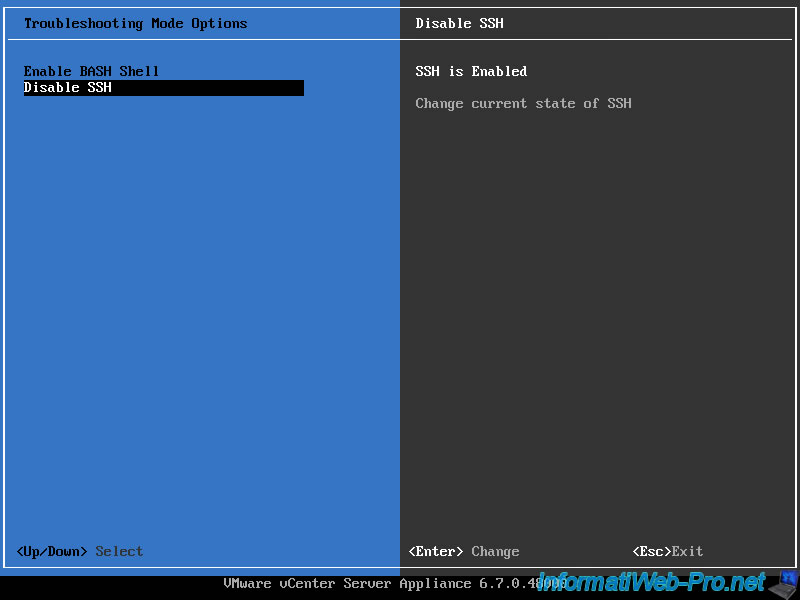
2. Enable SSH from the VMware VCSA web interface (VMware Appliance Management)
If you do not have access to the direct console of this "VCSA" VM (vCenter Server Appliance), connect via "https" to port 5480 with your favorite browser.
In our case, the address is: https://vcsa.informatiweb.lan:5480/login
Log in as "root".
Note: there is no keyboard layout problem in this case. This only affects the VCSA direct console.
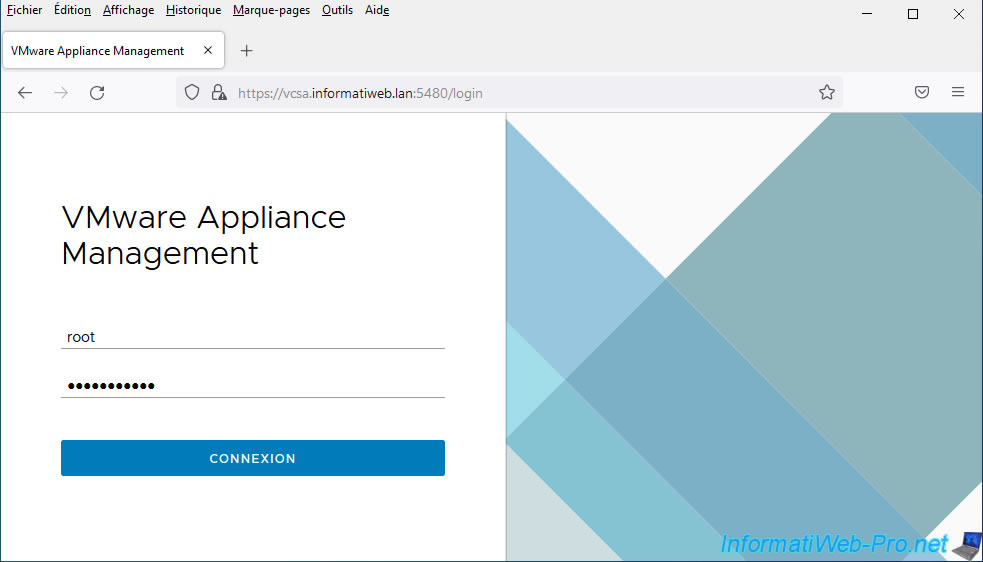
In the "Appliance Management" page that appears, go to "Access" and click "Edit".
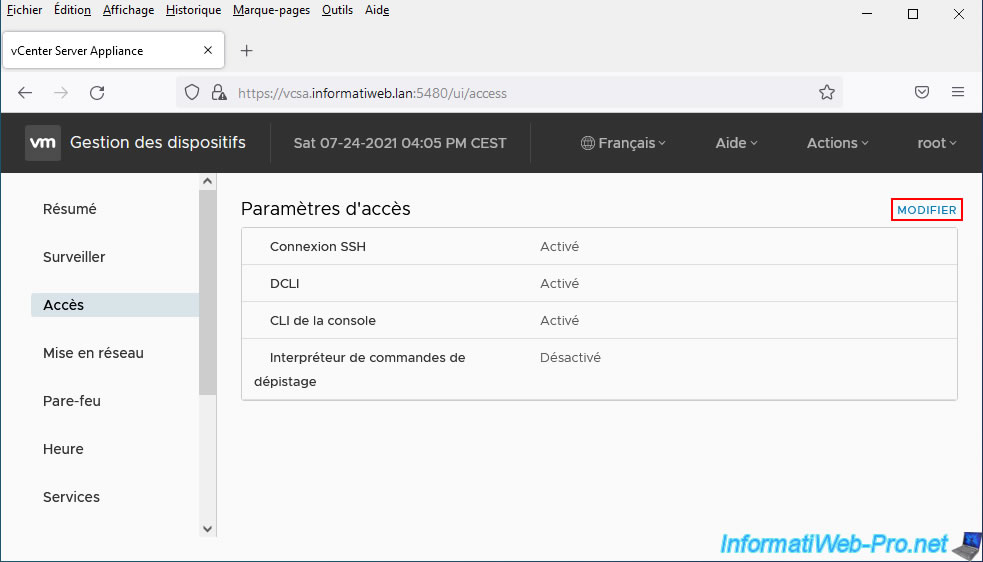
Enable the "Enable SSH Login" option and click OK.
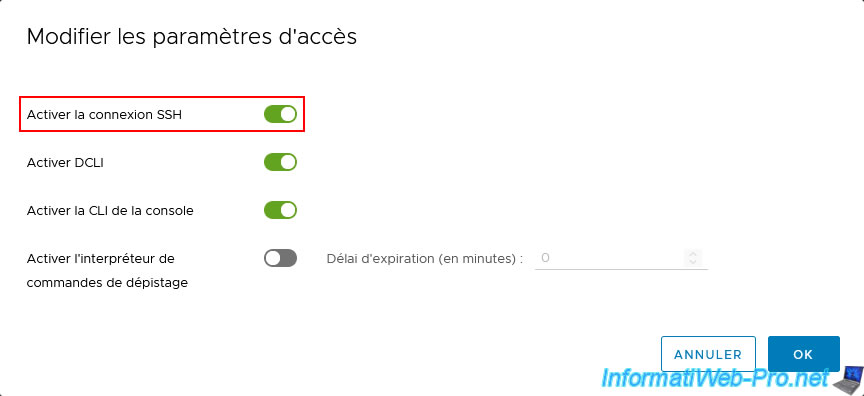
3. Connect via SSH using Putty
Now that the SSH protocol is activated on your "VCSA" VM, you can connect to it using an SSH client.
On Windows, the best known and free is : PuTTY.
Once the "putty.exe" file has been downloaded, launch it, indicate the IP address or domain name of your "VCSA" VM and click: Open.
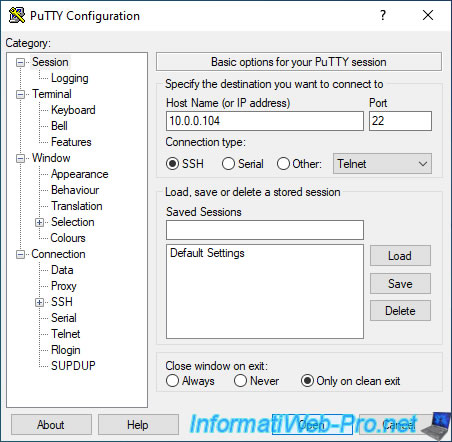
During the first connection to your "VCSA" VM, a security alert will be displayed, because your client does not yet know this server.
You can therefore ignore this warning by clicking on "Accept".
However, if this security alert reappears during a future connection to your "VCSA" VM, it is possible that you are not connecting to the correct VM.
Which means a hacker may have replaced the original server with a pirate server.
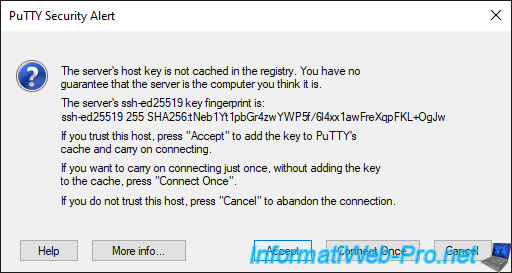
Log in as "root" and you will see that your "VCSA" VM will respond to you by displaying this banner:
Plain Text
VMware vCenter Server Appliance 6.7.0.48000 Type: vCenter Server with an embedded Platform Services Controller
This lets you know that you are connecting to a vCenter server before entering your password.
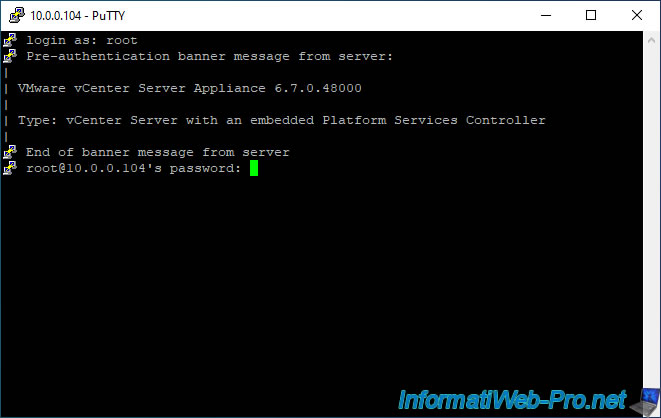
Once you have typed your password and validated, this will be displayed:
Plain Text
Connected to service
* List APIs: "help api list"
* List Plugins: "help pi list"
* Launch BASH: "shell"
Command>
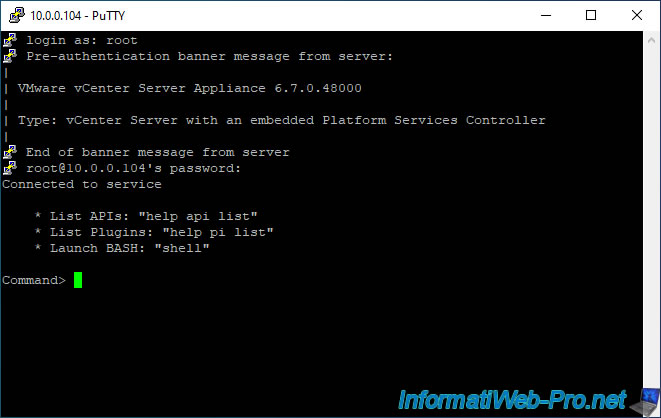
Share this tutorial
To see also
-
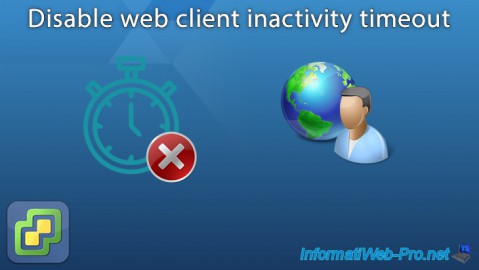
VMware 6/24/2022
VMware ESXi 7.0 / 6.7 - Disable web client inactivity timeout
-
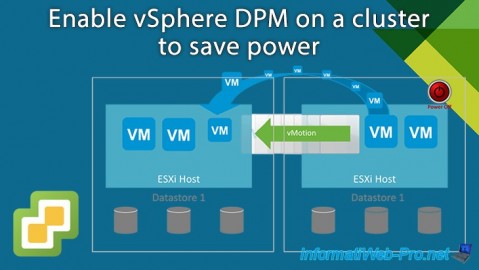
VMware 2/21/2025
VMware vSphere 6.7 - Enable vSphere DPM on a cluster
-
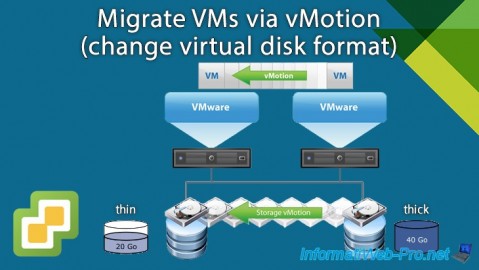
VMware 11/20/2024
VMware vSphere 6.7 - Migrate VMs via vMotion (change virtual disk format)
-
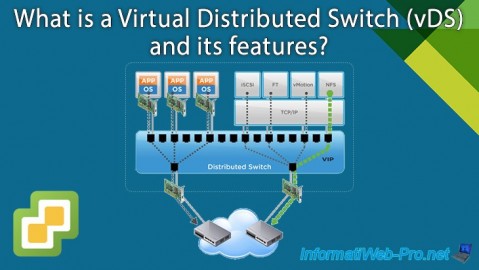
VMware 12/25/2024
VMware vSphere 6.7 - Virtual Distributed Switches (vDS)

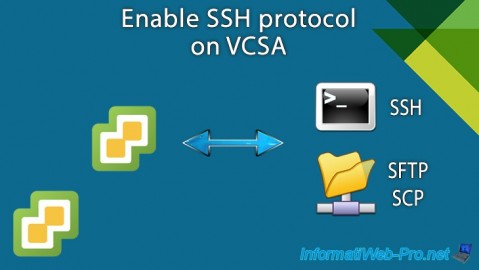
You must be logged in to post a comment